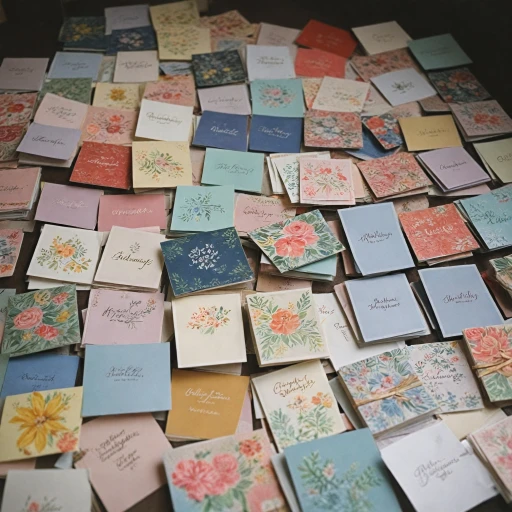
Understanding the Power of Peaceful Wishes
The Impact of Heartfelt Peaceful Wishes
Peaceful wishes hold a unique power that transcends simple well-wishes. They are more than mere words; they are expressions of love, comfort, and understanding that touch the soul and provide solace during difficult times. Whether conveyed through a thoughtful sympathy card or a message hoping for a lovely day, these wishes can significantly influence the recipient's mood and well-being. Understanding the psychological advantage of sending peaceful wishes involves recognizing their ability to offer emotional support. Consider, for instance, the comfort and peace a sensitive "thoughts and prayers" note provides during challenging life events. When crafted with genuine intentions, these messages can bring peace healing and peace love to those who need it most. An example of a heartfelt wish for peace is: "May your heart be comforted by the love and support that surrounds you. Wishing you strength and peace as you navigate through this difficult time." This message encompasses not only a wish for peace strength and peace sympathy but also underlying tones of love happiness. The key to these wishes is their ability to resonate on a deep, emotional level. By effectively tapping into feelings of peace, love, and happiness, these messages convey goodwill and positive energy without the need for grandiose language or complex metaphors. For those looking to delve deeper into the art of crafting such impactful messages, exploring the prayer to say before reading the Bible can provide a spiritual anchor and enhance one's understanding of compassionate communication.Crafting Your Message: Essential Elements
Creating a Resonant Message of Serenity
When wishing peace upon someone, especially in challenging times, the value lies in crafting a message that speaks to both the heart and mind. This isn't just about putting a greeting card in the cart; it’s about designing a message that exudes warmth, hope, and comfort. To begin your peace-filled message, consider these essential elements:- Heartfelt Introduction: Start your message by acknowledging the recipient. This can be as simple as "Thinking of you," which instantly creates a connection.
- Wishes for Peace and Comfort: Clearly articulate your hopes for the recipient’s peace, life, love, and happiness. For example, "May this day bring you the serenity and comfort you deserve."
- Personal Touch: Add a personalized element to your message. Identify one attribute or experience of the recipient that highlights their strength or peace resilience.
- Closing with Positivity: End with a forward-looking statement, offering thoughts, prayers, and positive outcomes. "Wishing you peace strength and all the love happiness a lovely day can bring."
Examples of Heartfelt Peace Wishes
Examples of Peace-Infused Expressions
The art of crafting heartfelt wishes for peace revolves around capturing emotions, aspirations, and sincere intentions in a few well-chosen words. Whether you’re penning a card or sending a message electronically, embracing serenity with your warm wishes can offer profound comfort and positivity. Here are some examples to inspire your messages:- For a Get Well Card: “May peace and healing envelop you during this challenging time. Wishing you comfort and strength as you recover, and may each day bring a step toward happiness and good health.”
- In a Condolence Message: “In this time of sorrow, may peace and love surround you like a gentle embrace. Our thoughts and prayers are with you, wishing you comfort and peace as you remember your loved one.” Exploring more about signing a condolence card can provide further insights into expressing sympathy.
- For Celebrations: “On your special day, I wish you all the peace and love the world has to offer. May this year be filled with countless moments of joy and happiness. Here’s to love, light, and laughter in every day!”
- In a Message of Reassurance: “When life feels hectic and overwhelming, take a moment to breathe and find your center. Let the peace within you guide your path and nurture your spirit with love and positive energy.”
The Psychology Behind Peaceful Wishes
Understanding the Emotional Impact of Peaceful Wishes
Peaceful wishes carry a profound emotional weight, often providing comfort and solace in times of need. When you send a message of peace, love, and happiness, you are not just offering words; you are extending a lifeline of hope and positivity. The psychology behind these wishes is rooted in the human need for connection and empathy.
The Role of Empathy in Crafting Messages
Empathy plays a crucial role in crafting a heartfelt message. When you genuinely understand and share the feelings of another, your wishes resonate more deeply. Whether it's a sympathy card or a greeting card for a lovely day, the intention behind your words can bring comfort and peace to the recipient. This connection is what makes your message more than just a collection of words; it becomes a source of strength and healing.
Examples of Effective Peaceful Wishes
- "May your life be filled with peace and love, bringing you comfort and happiness every day."
- "Wishing you peace and strength during this difficult time. May you find solace in the love and support around you."
- "In the midst of life's challenges, may you find peace and healing. Sending thoughts and prayers your way."
The Influence of Positive Messaging
Positive messaging in your wishes can significantly affect the recipient's mindset. A well-crafted message can uplift spirits and provide a sense of peace and comfort. This is particularly important in times of distress or uncertainty. By focusing on positive outcomes and expressing genuine care, your message can become a beacon of hope.
Considerations for Different Occasions
Tailoring your message to suit the occasion is essential. Whether it's a birthday, a time of sympathy, or a regular day, the context of your message should align with the recipient's current situation. This thoughtful approach ensures that your wishes are not only appropriate but also meaningful and impactful.
Tailoring Your Message for Different Occasions
Personalizing Peaceful Wishes for Unique Moments
Crafting heartfelt wishes for peace requires considering the distinct context and nuances of different occasions. When wishing someone well, it's essential to align your message with the specific emotions and atmosphere of the moment, ensuring a genuine and lasting impact. Here's how you can tailor your message for various situations: 1. Celebratory Occasions- Whether it's a birthday, anniversary, or a joyous event, infuse your message with a mix of peace and joy. You might write, "Wishing you a lovely day filled with peace, love, and endless happiness. May this year bring you moments of tranquility and joy at every turn."
- In moments of loss, a sympathy card that conveys peace and comfort can be a source of solace. Your message may say, "During this difficult time, may you find peace and comfort in the love that surrounds you. Our thoughts and prayers are with you as you navigate these challenging days."
- For new beginnings, such as a move or career change, express wishes that focus on peace and strength. Consider writing, "As you embark on this new journey, may peace accompany every step you take and lend you strength to face any challenges ahead."
- Sometimes, a simple reminder of peace can brighten someone’s day. Send a message like, "Wishing you a day filled with peace and positivity. May you find joy in the little things and comfort in knowing you're loved."
Common Mistakes to Avoid in Peace Wishes
Missteps to Sidestep in Your Peaceful Wishes
Crafting a heartfelt message of peace is an art that requires sensitivity and thoughtfulness. However, there are common pitfalls that can detract from the sincerity and impact of your wishes. Here are some mistakes to avoid:
- Overly Generic Messages: While it's tempting to use standard phrases, they can come across as impersonal. Instead, tailor your message to reflect the recipient's unique situation, as discussed in the section on tailoring your message for different occasions.
- Ignoring the Recipient's Beliefs: Be mindful of the recipient's cultural and religious beliefs. For instance, mentioning 'peace god' might not resonate with everyone. A more inclusive approach would be to wish for 'peace, love, and happiness' in their life.
- Using Negative Language: Avoid phrases that might unintentionally bring up negative emotions. Instead, focus on positive and uplifting language that conveys comfort and peace.
- Forgetting the Personal Touch: A simple 'thinking of you' or 'wishing you a lovely day' can add a personal touch that makes your message more meaningful.
- Overloading with Clichés: While phrases like 'thoughts and prayers' are well-intentioned, they can feel overused. Try to express your sentiments in a fresh and genuine way.
Remember, the goal is to convey a sense of peace and comfort. Whether you're sending a sympathy card or a greeting card for a special day, your message should reflect genuine care and thoughtfulness. By avoiding these common mistakes, you can ensure your wishes are received with the warmth and sincerity you intend.













